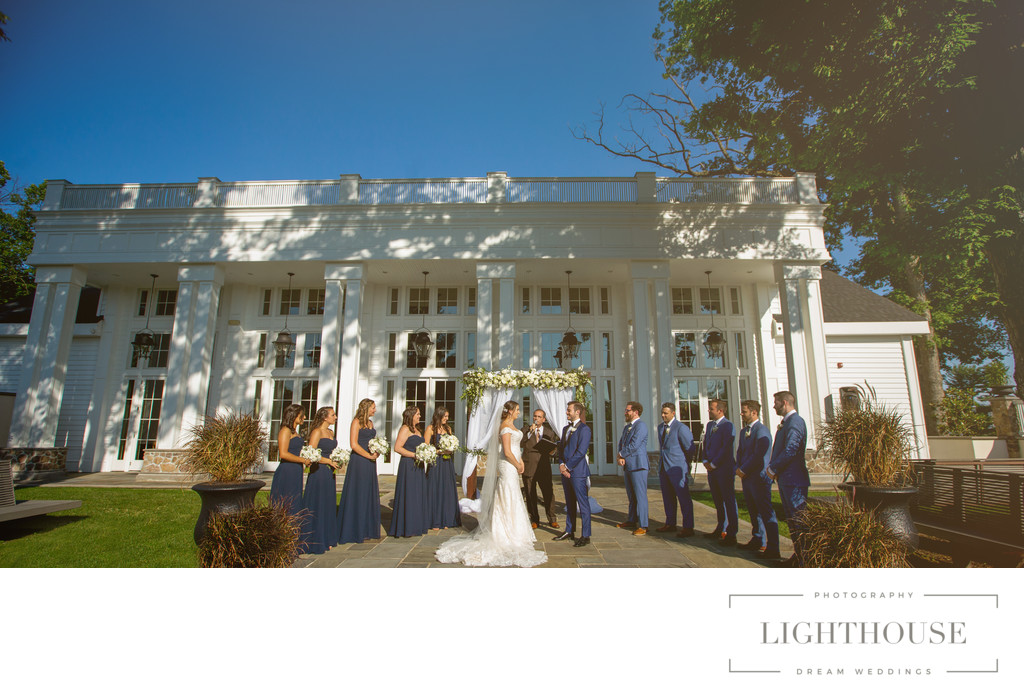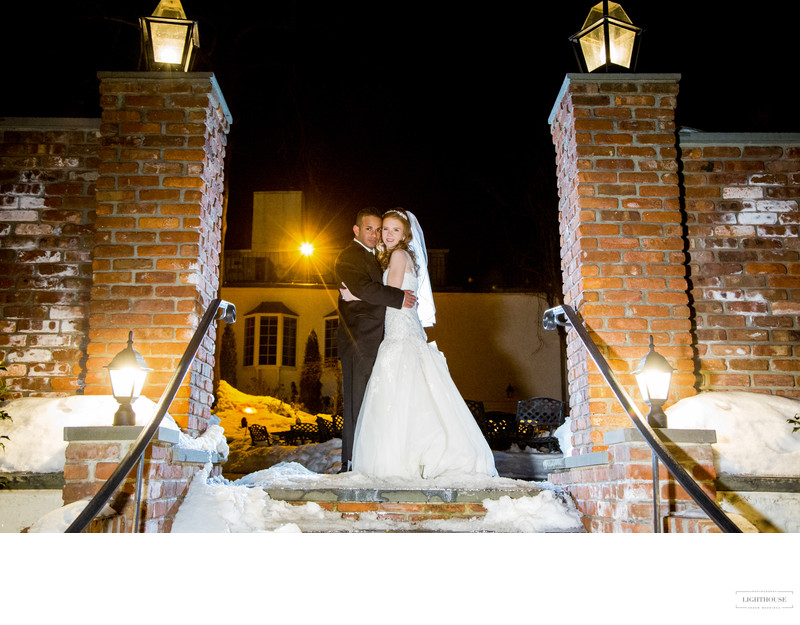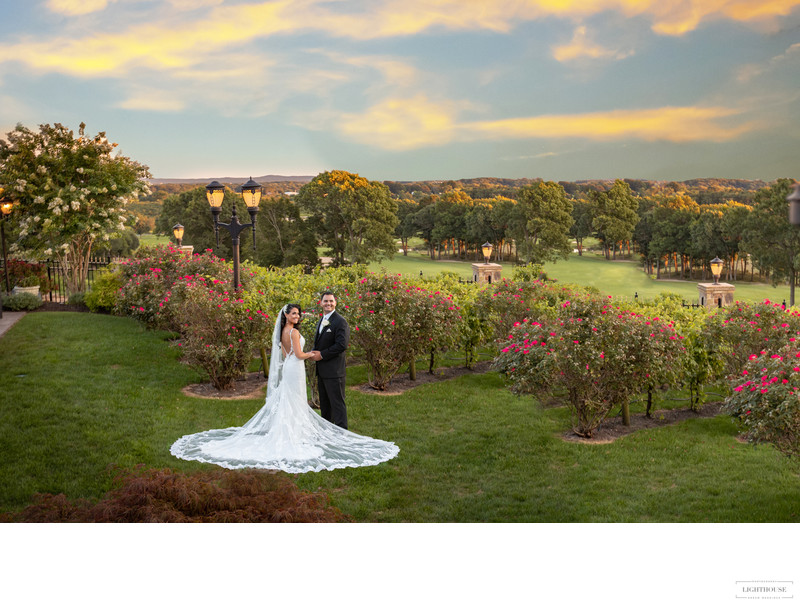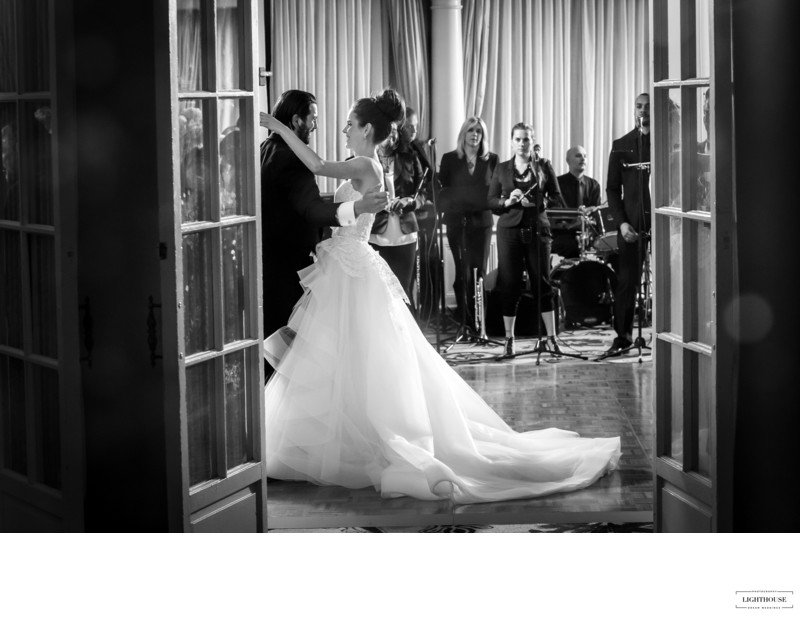
steps to find the right wedding photographer to capture your day.

Photo details: Fox Hollow 7725 Jericho Turnpike, Woodbury, NY 11797
Unlike your other wedding vendors ' work (music, floral arrangements, cake), photos aren't stuff you can hear, smell, taste or even see in the first place— you don't really know what you're getting until after the fact. This means diligent research and selectivity about technical skills, artistic style and personal actions when selecting your photographer are of extra importance.
Step 1: Settle on a Style Before you start investigating Long Island photographers, you will first have to decide what kind of photography style you prefer, because this will help you determine what kind of photographer you want to film your wedding. Get some inspiration! Spend time pouring on every form of imagery you love, from decor shots to Instagram feed from a fashion blogger. When you have a decent set of inspirational images, consider focusing in on what exactly draws you to them and dissecting what you and your partner feel most genuine. This may be formal-positioned portraits, a traditional style of photography, or a lifestyle, photojournalistic look. If you love bright and contrast-y shots, maybe the right choice for you is a wedding photographer with a dramatic flair. Note that you don't necessarily have to focus in on one style in particular, as our wedding photographers will do a mixture of portraiture and documentary-style shots, a mixture of black-and-white and color pictures, etc. So if you love a specific theme, make sure to concentrate on the Long Island photographers who specialize in it.

Photo details:
Step 2: Do Your Homework Continue your quest by reading reviews of recent newlyweds and searching Long Island listings. Carefully research the websites and profiles of potential wedding photographers and check out pictures of other weddings they have shot that will give you an idea of their style. Why do they catch crucial moments for you, like the gown of a mother bustling with her daughter or an intense first look? Website design can also provide clues about the nature and sensibility of the wedding photographer. If possible, check out their accounts on Facebook, Instagram and Twitter too. Is Customer Feedback Positive? How did the wedding photographer react? Why do they communicate with their followers on Instagram, do they appear friendly and personable? You get the picture.
Phase 3: Set up interviews This is not a choice you can make on looks alone— you have to meet in person with your potential Long Island wedding photographers. If you like what you see on their site— and your ballpark fees are within your range — call to see if they are available for your wedding date. Establish in-person meetings with three to five prospective photographers available on your wedding date to discuss more of their work and determine whether your personalities are meshing. Be prepared to think about your location, the theme of your wedding and what you plan for your pictures.

Step 5: Review Albums With a Critical Eye Check for the main moments you want captured when you review a photographer's album: Did they get pictures of both the bride and the groom when they first closed their eyes? Look out for image crispness, careful compositions (does a shot look good the way it was posed, or is there too much clutter in the frame?) and good lighting (beware of washed-out pictures where tiny details are blurred— unless that's the style you're after). Also, it is very important that you sense sensitivity in capturing the emotions of people; make sure that the subjects of the photographer look calm, not like deer caught in headlights. Although you two are of course significant, you would like to see your friends ' smiling shots too.
Step 6: Make sure your personalities mesh Don't underestimate the value of loving your wedding photographer and bonding with her. Was the photographer pleased when you explain your vision? Do they address them in a simple and polite manner while making suggestions or are they timid? Go with a pro who has a strong grasp of social graces but is brave enough to go out looking for great pictures and who, above all, puts you at ease and does not irritate you in any way, to get the best pictures. Remember: They're going to follow your every move, and the more relaxed you're both with the photographer, the better the pictures will be. Likewise, you don't want any visitors to be insulted or irritated by the photographer but to shoot them unobtrusively in their best light. To order to capture the best pictures, the photographer needs to be sufficiently assertive to look for perfect opportunities, cajoling enough to elicit happy smiles and natural attitudes from visitors, and confident enough to be a motivating force. They should ask a lot of questions and they should be good listeners.
Often, test if the contract involves a second wedding photographer, and if it doesn't, inquire about the possibility. It's possible the second shooter to be checked later, but the key benefit of getting two shooters is, of course, that you get double the coverage. For example, one wedding photographer can capture the formal images during your formal photo session, while the second photographer can capture behind - the-scenes, photojournalistic pictures while your guests mingle. If you're holding a bigger wedding (250 or more guests), you may also want to inquire about hiring three photographers, so your photography team will be sure to capture the event from all angles.
Step 8: Ask About Your Rights Some contracts stipulate that the wedding photographer is the owner of all pictures taken at the wedding, including those of you. In other words, the photographer can use them promotionally (submit them for publication on their website or blog, and even position them in ads). This also means you can't just post the digital proofs they're giving you — most photographers have a policy that you should publish only watermarked photos or photos with their name on them. However, unless you agree differently, you'll have to purchase the rights to the photographs if you want to print the photos yourself or order an album from a different source.
Step 9: Get the Postproduction Information Normally it takes at least a month for your photographer to get all those photo proofs back. Why? For what? Your photographer shoots massive, raw files that are much larger than your average JPG. Shooting raw files allows the photographer a greater opportunity to correct the image, but it also takes a longer time to import, process and edit all those files (to correct color rates, etc). This varies, but many photographers claim they spend an extra 40 hours processing photographs from a single wedding, and it can take up to six to eight weeks (or longer, depending on the photographer and how busy they are) to get back proofs. Here's what to ask: How many pictures do I expect? Would they be high or low resolution? May I get prints made by myself, or does the photographer hold the image rights? Will the proofs that I see be the retouched versions, or does it happen after I pick the pictures I want? When it comes to retouching, inquire about choices for retouching and special effects (which can range from plain white balance to beauty retouching and stylised art effects such as super-saturated colors) and the extra cost of both.
Phase 10: Plan Together for the Day-Of Note that your photographer is the expert, so you shouldn't waste too much time setting together a detailed shot list for them though it's helpful. Instead, pass your day-of-time timeline, give them an idea of what pictures you would like to catch (including a shot of of of your bridesmaids in addition to photos of the wedding party) and let them do their thing. It is also the best opportunity to give them a handle on any family or relationship intricacies that they may be aware of, such as divorced parents, a grandmother who wants to keep sitting for photos, or a groom and bridesmaid who doesn't get along (hey, it happens!). Whether you're hoping to see your wedding day featured online or in a down the road magazine, make sure to relay it to your photographer. In this way, they will place special focus on taking shots of all your incredible details and will probably come loaded with beautiful fashion accessories, such as ribbons, linens and more, with the intention of really making your wedding aesthetic stand out.